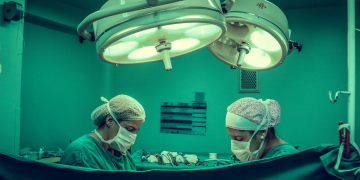

By Jeff Britton | SDUN Reporter
If you want to tantalize your olfactory and gastronomic senses while you cultivate your artistic sensibilities, then Art Alive’s annual fundraiser on April 28 at the San Diego Museum of Art is the place to be.
Now in its 30th year, Art Alive is the museum’s signature fundraiser, generating critical funds for special exhibitions, educational outreach, programs, and art conservation. It provides much needed financial support for the museum while giving San Diegans an opportunity to enjoy a stylish evening of cocktails, food, flowers, art, music and dancing.
The event, from 7 to 11 p.m., will offer donors an opportunity to sample fare from some of San Diego’s finest restaurants and marvel at floral displays by master florists, inspired by artworks in the museum’s collection.
The event is $200 for museum members and $250 for nonmembers; however, for the price of museum admission the public can also enjoy the elaborate and opulent floral displays, which capture the essence of paintings and sculptures
in the museum’s collection, April 29 to May 1—(also the last weekend to see a traveling show of Thomas Gainsborough’s women and the vibrant modern art of British designer Howard Hodgkin [reviewed in the Feb. 18 issue of SDUN]).
Museum lovers might also want to check out two lesser-touted exhibits adjoining the rotunda where the Art Alive event is held: To the immediate east of the rotunda is an intriguing exhibit about the semi-nomadic cultures of Southwestern Africa, specifically Lesotho and South Africa, which border the Indian Ocean. The display shows how livestock grazing requirements and the fertility of farmland ruled tribes such as the Zulu, Swazi,Xhosa and others.
Personal artworks such as the elaborate beadwork that marks the craftsman’s ethnic identity and a wedding train made of glass beads, textiles and natural fibers characterize this exhibit, along with a beaded nursing necklace, a child figurine, an initiation veil for adolescent girls, and a Zulu pregnancy apron made of goatskin, fur, beads and metal studs. Other simple, yet elegant exhibits include hand-hewn wooden spoons, beautifully carved walking sticks and a huge ceramic beer vessel to hold the sorghum mixture for brewing.
Just west of the rotunda is the Temple, Palace, Mosque exhibit of Southern Asia, where a dizzying variety of sculpted images from Buddhist, Hindu and Jain temples tell the stories of these religions and their holy men and women. A head of a bodhisattva from Pakistan, a seated Buddha and his follower Vajrapani, both carved in heavy stone, are juxtaposed with a Vyala from 11th century India, a horned figure with the beak of a bird along side one of Shiva, lord of music.
Perhaps most outstanding are various panels, one depicting forms of astronomical bodies, another of goddesses from an 18th century chariot made of wood. From Sri Lanka comes an assortment of opaque watercolors on wood and charcoal on palm leaf. A small, seated bronze Buddha from the 12th century sits unassumingly next to an ornate manuscript of the Great Dagoba of important holy people.
A huge display case of three gilt bronze Buddha heads from Thailand join a reclining Buddha and an exquisite manuscript of gold and lacquer on wood pulp of a Thai monk. Adjoining galleries feature the marvelous muted colors of 17th century Indian paintings from the Rajput kingdom of northwestern India, part of the museum’s celebrated Edwin Binney Collection of nearly 2,000 paintings.
Finally, an Islamic art exhibit features a huge, glazed ceramic mural of a medieval shah’s court scene of dancing and feasting. The ink and gold pages of a Koran from northern India and a silk embroidered tapestry from Uzbekistan used in mosques are also on display, along with Persian Koran scrolls written on oxen intestine in the elegant calligraphy of a Sufi leader and a gorgeous glazed ceramic from a Persian palace, surrounded by a variety of Binney paintings.
For more information, call (619) 696-1999, or visit: sdmart.org.












Discussion about this post